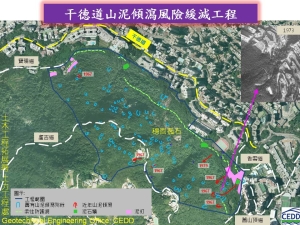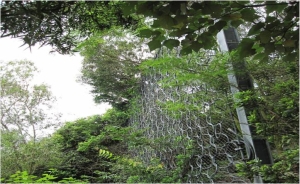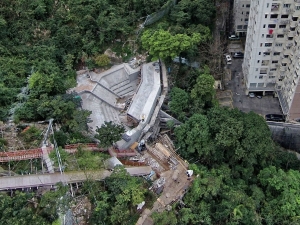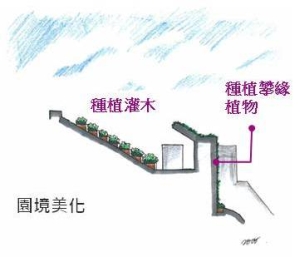Be aware of landslide risk
|
Last year, the Civil Engineering and Development Department (CEDD) received 237 landslide reports. We were grateful that not only was it fewer than the average of 300 cases per year that we have had over the last 25 years, but also that there were no casualties. Nonetheless, we still have to be well prepared, especially in light of the looming challenges brought about by extreme weather. This year, the Hong Kong Observatory issued a warning that the typhoon season may begin as early as June, and forecast that there will be four to seven tropical cyclones entering the 500-kilometre radius of Hong Kong this year. As typhoons and heavy rainstorms may lead to landslides, the best way to prepare is to do maintenance work on the slopes in advance. Given the threat of landslide, we can never let down our guard in prevention. In 2010, the Geotechnical Engineering Office (GEO) of the CEDD launched the Landslip Prevention and Mitigation Programme to deal with natural hillsides systemically and upgrade the man-made slopes on a risk-oriented management basis, so as to reduce the overall landslide risk. In recent years, our target has been to upgrade 150 government man-made slopes, conduct safety-screening studies for 100 private man-made slopes, and implement the necessary risk mitigation works for 30 natural hillside catchments each year. Thanks to its work in these aspects over the past 30 years or so, the GEO has upgraded about 5 300 government man-made slopes, completed safety-screening studies for some 5 600 private man-made slopes, and carried out risk mitigation measures for over 100 natural hillside catchments. The overall landslide risk has reached a relatively low level that is commensurate with the international best practice in risk management. Nonetheless, as the population of Hong Kong keeps growing, our urban developments are creeping closer and closer to the natural hillsides, thus increasing the number of people at risk. We have to deal with the natural hillsides with known potential risks systematically, including carrying out risk mitigation measures like the construction of check dams and flexible barriers. For example, the GEO spent over $100 million in 2011 to carry out landslide prevention and mitigation works at a natural hillside on Conduit Road in Central and Western District, which included soil nailing and the stabilisation of boulders, as well as the construction of concrete check dams and flexible barriers. It is estimated that upon completion of the works in the second quarter of this year, the largest check dam there will be able to withstand rock debris up to the weight of four double-decker buses, which will reduce the landslide risk significantly. In addition to prevention and mitigation works and the regular maintenance of government slopes before the rainy season, we have also rolled out public education activities to remind private property owners to complete slope inspection and maintenance works. If potential landslide risk is found under the safety-screening mechanism for private slopes, we will ask the private property owners responsible to undertake slope maintenance quickly in accordance with the Buildings Ordinance. Nonetheless, government efforts alone are never enough. We need to work together with the community to deal with landslides, so as to minimise loss of life and damage to property. Given the hilly terrain of Hong Kong, many buildings and infrastructures are built on slopes. As the extreme weather conditions brought about by climate change may give rise to more frequent and larger-scale landslides, we have to remain vigilant particularly during heavy rainstorms. We should pay attention to the landslip warnings and avoid getting close to or driving near steep slopes or retaining walls. In case of a landslide, we should take appropriate contingency measures to minimise the number of casualties. You should take the following steps as appropriate:
-Stay away from the slope and go to the nearest temporary shelter if possible; If we can be vigilant, stay alert and react swiftly, the dangers posed by landslides can be reduced significantly. |
|
31 May, 2015
Back



